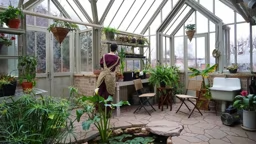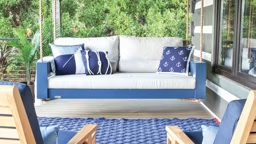 Every yard seems to have at least one spot the sun struggles to reach, whether because of tree cover, a north-side location or a log home's higher proportion of overhangs. But don't despair—go ahead and dig in. While you won't have much luck with flashy, bright lilies and other sunny garden celebrities, today's shade-loving plants are no wallflowers.
Every yard seems to have at least one spot the sun struggles to reach, whether because of tree cover, a north-side location or a log home's higher proportion of overhangs. But don't despair—go ahead and dig in. While you won't have much luck with flashy, bright lilies and other sunny garden celebrities, today's shade-loving plants are no wallflowers.
"They used to say shade was a curse," says Ken Druse, author of The Natural Shade Gardenand more than a dozen gardening books. "Now it's an opportunity."
With shimmering textures, colorful patterns and delicate flowers, shade-dwelling plants present a whole new palette to play with.
Seek Inspiration from the Best Shade Gardens
 The first step is to hit the road. Find a botanical garden, arboretum or nursery with demonstration gardens. They'll know what works best for the local soil and climate. Take a notebook to jot down names of plants you like best and a camera to get ideas on how to put them together. Some of the most beautiful shade plants come from woodlands and provide a spectacular spring show. You can design a wildflower garden with ferns, trilliums, trout lilies, lady's slippers, bleeding hearts, bluebells, phlox and bloodroot.
The first step is to hit the road. Find a botanical garden, arboretum or nursery with demonstration gardens. They'll know what works best for the local soil and climate. Take a notebook to jot down names of plants you like best and a camera to get ideas on how to put them together. Some of the most beautiful shade plants come from woodlands and provide a spectacular spring show. You can design a wildflower garden with ferns, trilliums, trout lilies, lady's slippers, bleeding hearts, bluebells, phlox and bloodroot.
Mix Up Your Ideas
Look for a variety of colors and textures in your garden. Try variegated leaves with bright highlights, group yellow-greens with blue-greens, or weave in dark colors such as purple heuchera. Blend tall, delicate plants such as astilbes with the lush, shiny leaves of hostas. Look for plants with white or light-colored flowers, which will stand out better in the shade than dark reds or purples.
If you want a tasty bonus, try highbush cranberry or blueberries, which will yield seasonal snacks. Fill in with lush, flowering groundcovers such as foamflower, Japanese spurge and leadwort.
The warm tones of logs blend gorgeously with greenery. Choose a few evergreens for year-round color. Look for rhododendrons, yew, holly, hemlock, hellebores and boxwood.
Hostas - The One-Stop Garden Wonder
Hostas, the one-stop wonder for shade gardening, come in thousands of varieties. From miniature stiletto styles to shrub-sized mounds striped with every possible blend of green, white, yellow and blue, they also bloom with neutral to fragrant white or purple flowers in mid- to late summer. Keep them protected or skip the most expensive varieties if deer tend to raid your yard.
In addition to the flowers you plant, throw in a couple benches where you can relax and get a break from the sun on hot days.
"Make it a place to really chill,— Ken advises. "Think of it as your secret place.—
Remember the Shade Garden Design Basics
Assess your shade, and pay attention to plant labels when purchasing. Light or filtered shade means the sun is blocked only two to three hours a day. Partial or medium shade means about six hours of sun and can support some flowering shrubs such as hardier hydrangeas . (Endless Summer is a popular new variety.) Deep shade requires only four to six hours of sun. In general, the darker and broader a plant's leaves are, the better it can gather sunlight and tolerate shade.
Most shade comes from trees, which can hog water. That means shady areas need extra care in watering, especially the first year you plant perennials. Invest in a soaker hose, which waters plants slowly and right at the root level. This keeps the leaves drier, and because there's no spray, they're protected from disease.
Find the best hydrangeas for your garden.











